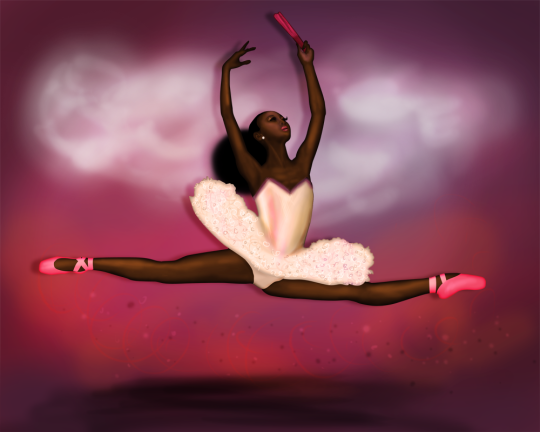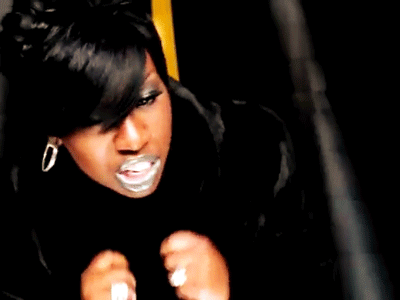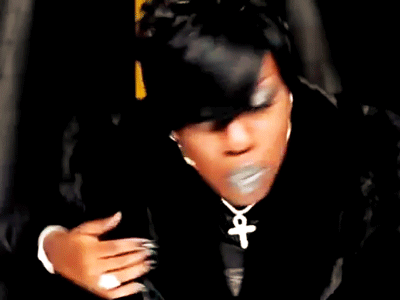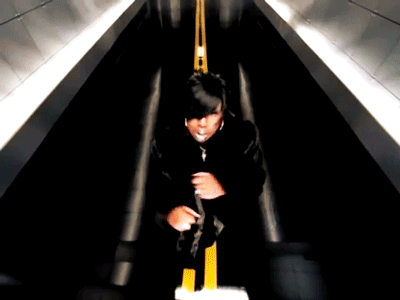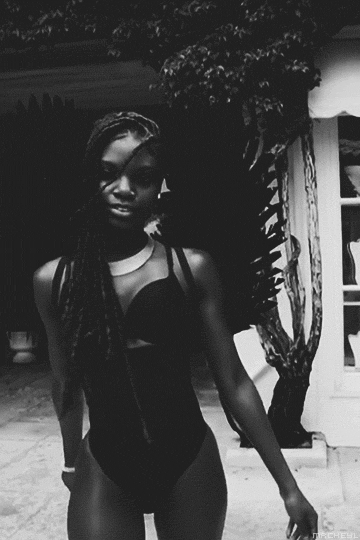Video
What are you willing to do? @badgalriri @miguel @spotify #latepost #kissitbetter #sxsw2016 #sxsw #miguel #isitgettinghot #justus #okthen (at Austin, Texas)
0 notes
Video
South by we miss you already! #miguel #spotify #empiricamagazine #howmanydrinks (at The Spotify House)
0 notes
Video
When @erykahbadu tells you #dontchange you dont do it. @labarttexas #cantusemyphone mixtape release (at LAB ART Texas)
0 notes
Text
But I still want to know what happened to Sandra Bland....
48K notes
·
View notes
Photo

Congrats to our #giveaway winner! Check out the link in our bio and subscribe for your chance to win next month! #empiricamagazine
0 notes
Photo
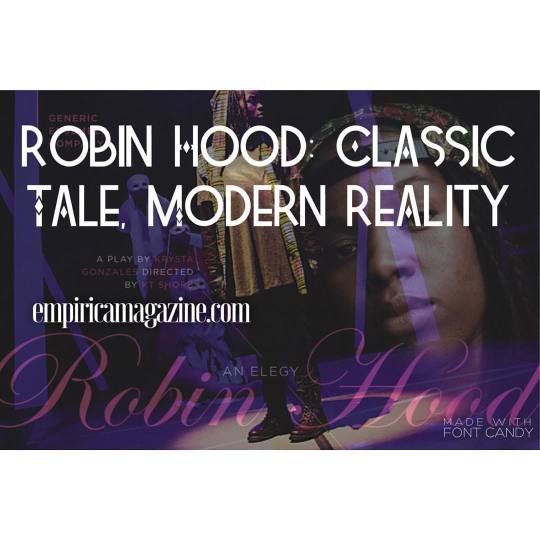
Empirica Magazine talks to the creators of Robin Hood: An Elegy. Thanks @genenco @ktshorb and Krysta Gonzalez.
0 notes
Text
Robin Hood: Classic Tale, Modern Reality.
Eric Garner. Tamir Rice. Trayvon Martin. Michael Brown. These names have become familiar to us as symbols of America’s unjust police system. For the past two years, the Black Lives Matter movement has opened up a platform where people can have a frank discussion about the over policing of Blacks in America. Along the way, the Black Lives Matter movement has also inspired a creative movement, particularly in the realm of theatre. In Austin alone, two plays debuted this summer that put theses issues in from of theater audiences in a brutally honest way: Hands Up, Hoodies Down and Robin Hood: An Elegy.
Empirica Magazine had the opportunity to interview the playwright and director of Robin Hood: An Elegy. The play follows the story of a Black Robin Hood who “transcends space and time experiencing state-sanctioned racism.” Playwright Krysta Gonzales and Director KT Shorb spoke with us about the motivation behind the play and the need for more women of color to create their own narratives on the theatre stage.
When and why did you start (or become involved in) the Generic Ensemble Company?
KT: I founded GenEnCo in 2009. I had just come back from a serious training intensive with the SITI Company where they emphasized the importance of ensemble and "company." Originally, I had gone to the intensive to train as an actor because I wanted to be able to work with physical theatre companies like the Rude Mechanicals. Literally, my friend Madge Darlington was like, "Go to SITI." The year before I went to SITI, too, I had worked with a short-lived theatre collective called StampLab. I had co-founded StampLab because I could barely land any parts. I was auditioning all over town but I was never the right "type." I realized the only way to be a gender queer person of color acting onstage was to write myself onto it. StampLab was the first way I learned to do that in collaboration. We mounted two shows of all people of color--winning some awards along the way. StampLab folded, however, because my collaborators left town. A confluence of SITI training emphasizing "company," plus my need to continue working with people of color, plus my realization that we needed to write ourselves onstage made me start GenEnCo.
Krysta: I met KT while rehearsing another show and when I learned that her company strives to increase the visibility of marginalized populations through the creation of experimental theatre, I knew that was something I wanted to be a part of.
I read the “About Us” section on the GEC website and it said that you make the invisible, visible. This can relate to messages, symbols, and people. What does it mean for GEC?
KT: First and foremost, it is to make invisible bodies and communities visible. When I created the organization, what I had in mind was people of color, queers, genderqueers, and immigrant communities. The definition of "invisible" is always changing, but underneath, our work must emphasize the stories and people that society-at-large does not choose to see. This is why we have a "minority-majority" structure. I always make sure the majority of people on any given GenEnCo cast are people of color (honestly, we've only ever had one white performer), and a majority be queer-identified. I also make sure that the majority onstage are women or female-identified, though women are not a minority. I have other ideas about what making the invisible visible can mean--mostly it is about aesthetics and philosophy. We make our invisible feelings visible by enacting them. We make our invisible energy visible via movement. We also use lesser-known experimental processes to discover deeper meanings of the human condition, etc.
Why did you decide to choose the character of Robin Hood? What parallels did you see in 2015 that pushed you to repurpose the story of Robin Hood? The play on words with “Hood” is mentioned at one point in the play. Did that play a role in your decision?
KT: Robin Hood had been percolating in my mind for a few months last year. I thought that it was ripe for a contemporary re-telling especially in the wake of the Occupy movement and such clear instances of corruption and violence at many levels. I wanted to explore state-based repression, but hadn't landed on the specifics. Then Mike Brown happened and Eric Garner happened and during the civil unrest after the Eric Garner verdict, I realized that the gross over-reach of police power was basically exactly what Robin Hood was about. The fact that "Hood" was part of that mythology is a useful coincidence. I asked Krysta to write the play with the following ingredients: Robin Hood is Black, the show is about state-sanctioned violence against Black bodies, and it needs to be medicine. I think in the initial talks we both agreed that the connection between "hood" and the image of the hoodie with Trayvon Martin and just Black masculinity in general was an important detail to explore. Krysta took those ingredients and ran with it.
Krysta: While I was abroad, the company decided that they wanted their next work to examine oppression through the lens of Robin Hood. Upon my return, I volunteered to write the text for their exploration. Shortly after I volunteered, the coverage of violence against black people, perpetrated by the state grew very quickly. It became apparent that the work we needed to do was about this specific long-standing violence against the black population.
There are moments in the play when the actors come out of character to vividly describe the violent death of a Black person who lost their life as a result of police brutality and also violence from White citizens. Why was telling these stories so important to you?
KT: In the GenEnCo collaborative process, it is important that actors are collaborators in content as well as performance. I feel that when I'm working with politicized communities and artists that each collaborator needs to feel a certain ownership over what they do. Originally, these breaks were going to be the comic relief from the brutality of the rest of the play. However, as we kept working on it, more and more violence kept happening and we saw that we didn't need to have relief from the brutality, we actually needed to lean into it EVEN MORE. Krysta had written into the script that someone tell a story about Elizabeth Key Grinstead, and we thought that this would be a good model for the breaks. So I asked each of the Black actors to pick a person or event that showed racialized violence. They could have talked about their own lives or historical figures. I think most of them--whether consciously or unconsciously--chose to fulfill the title of the play by writing elegies.
Krysta: I think the elegies were critical to the piece because they serve as a reminder of where this piece originated. The play is very much intended to be a reflection of what has been happening in the real world as opposed to a serving as a story that came entirely from our imaginations.
I don’t think I have ever heard anyone use the term “state-sanctioned” violence in regards to police brutality against Black bodies. Do you think that this state sanctioned violence still occurs today?
KT: When the prosecutor barely tries to even bring Darren Wilson to trial for shooting an unarmed man six times; that is state-sanctioned. It is literally the state refusing to criminalize murder. Eric Garner, Oscar Grant, Rekia Boyd, Sam Dubose--all instances of violence that the state has sanctioned in some way by cultivating a culture that accepts that police can kill citizens--especially Black citizens. I think we have become so accustomed to violence in our lives as people of color that we don't really notice that the context of this violence is deeply wrong. Part of my childhood was spent living in Japan. There, any instance where a police officer kills anyone is extremely rare. Every time a Japanese policeman discharges a gun, there is an investigation. A Black person in the U.S. has as much chance of being killed as someone in Burma--which is a warzone military dictatorship. A white person in the U.S. has as much chance of being killed as someone in Finland--where few citizens are ever killed by police. The State sanctions this by doing nothing and refusing to keep its agents (the police, Homeland Security, etc.) accountable. We have to remember that in the U.S., the police force is a direct descendant of slave search parties--where plantation owners would keep poor whites on payroll to "keep the peace" by hunting down enslaved Africans who sought freedom. It will take more than good intentions to fundamentally change how policing works in our country.
Krysta: Absolutely. Laws are enforced by agents of the state and many of those laws were written without regard for black people. The rights black people have in this country today are the result of constitutional amendments - changes to the original document because the original document declared a black person as ⅗ of a human being (which was generous in the minds of the lawmakers, I imagine, considering the true nature and intent of chattel-slavery). Police officers are agents of the state and when they don’t see fit to put Freddie Grey into a seat belt when they’re bringing him in, that’s state sanctioned violence. When an officer escalates a traffic stop to put Sandra Bland in jail - that’s state sanctioned violence. When an officer shoots Walter Scott in the back in broad daylight - that’s state sanctioned violence. And those are just the stories we hear about. Those are just a fraction of the stories from this year alone. Although more police are being taken to trial, convictions are still extremely rare. I also think Danette Chavis does an excellent job of breaking down the legal system and how the term “state sanctioned” pertains to the violence: https://www.youtube.com/watch?v=ID4YeakyIGQ
There is a point during the play when Robin is in class and her teacher ignores her when she is speaking and blames her for having a laser pointer even though someone else is literally holding it. Have you been through an experience when someone ignored or blamed on something based on your race?
KT: We actually shifted this scene a lot during the rehearsal process. The way it was originally written, Robin was actually doing all this mischief. Then one of the actors was like, "Why is Robin such a jerk? The teacher should be disciplining him!" At the time, I didn't agree that his mischief was misbehavior--I saw it as resistance. But as we explored the idea that Robin is being blamed for things he didn't do, the staging and meaning of the scene became clearer. I do have experience of being harshly disciplined as a child. I believe a lot of it was racial; I grew up in a very white suburb of Boston, with classmates calling me "Jap" and "Chink." I was precocious, athletic, and talkative. But I wasn't mischievous at all and I generally followed the rules as I understood them. Yet I always felt like I was doing something wrong because my teachers were constantly scolding me. In hindsight, the combination of me being a racially ambiguous child and a girl who didn't know how to dress and "calm down" made it very difficult for me. When I moved to Japan in 8th grade, teachers stopped disciplining me so harshly. I was only disciplined when I clearly broke rules. That was a big change.
Krysta: As an adult, I typically find myself ignored in service situations. It can be hard to get help (much less good service) while out shopping or while out to eat/at a bar. I’ve given up on hailing a taxi altogether.
I read on a website that I went to that to that portions of Robin Hood were “devised by the ensemble”. Did the actors play a part in the writing process? If so, what parts did you collaborate with the actors on?
KT: All the "breaks" were written by the ensemble members who delivered them. The prologue was co-written with Althea Clemons, who delivered it. There were also some structured improvisational moments (especially between Tucky and LJ).
Krysta: During the writing process, I would write a draft, then collect feedback from the actors, the director and the dramaturgs. After sifting through all the feedback, I’d create another draft and we went through several cycles of that process to come to the draft that ended up being the performance text. The dramaturgs (Toi Scott and Anthony Watkins II) were really instrumental in helping me process all the feedback I received from the actors and from KT.
Althea Clemons and I worked together directly on the opening speech she delivered at the top of the show.
We asked the actors to improvise scenarios so that I could finalize dialogue that sounded natural coming out of their mouths. And in some cases, I left certain sections of the play open to structured improvisation during performance because I trusted their skills and the chemistry they had with their fellow actors onstage. The improvisation mainly took place between LJ, Tucky, Mary Anne, and Robin.
The elegies were devised by the actors. They chose the individual or event they'd speak about and ran with it. The only elegy I placed in the piece was for Elizabeth Key Grinstead. However, I did not write the final text, I just knew I wanted her to be spoken about. Chelsea Manasseri did an excellent job of capturing Elizabeth's story and its significance to the piece and its historical implications.
One of my favorite parts of the play was when actor Cameron McKnight asked the Black bodies in the audience to raise their hands. Then he enthusiastically says to us “I love you” over and over. That part really touched me. What made you add that to the play?
KT: That was mostly Cameron. It was his idea to tell Black people in the audience that he loved them--which all of us really loved. His original ideas and how it ended up were pretty different because me, Krysta, the dramaturges and other cast members gave Cameron feedback on details, but really, it was his idea. I'm glad he brought that to the piece.
Krysta: We gave each of the actors license to craft their own elegy. We offered some recommendations for shaping and fine-tuning, but the elegies were the product of the actors’ talent and research, so I can’t take credit for Cameron’s powerful moment.
How has the #BlackLivesMatter movement influenced your writing?
KT: This seems like it's more for Krysta, since it's about writing. I will say that the impetus for the entire piece and much of my staging decisions were in direct conversation with and support of #blacklivesmatter.
Krysta: I tried to keep up with the conversations being had on Twitter within the movement as part of my research (in addition to delving into the history of lynching and other state sanctioned violence in the U.S.). Reading the rhetoric of Alicia Garza and DeRay McKesson (among many engaged in the conversations) helped guide me in how to frame some of the scenes as well as what to keep in mind while shaping the different characters. As I mentioned before, the dramaturgs were also incredibly helpful by serving as historical and cultural custodians to make sure I was writing from an informed place, taking careful consideration in how we ultimately shaped the piece.
If you can, could you tell us a bit about the projects you are currently working on?
KT: The next GenEnCo show will be an Asian American radical adaptation of Gilbert and Sullivan's operetta, THE MIKADO--set to open at the VORTEX on February 12. The original operetta was created in Victorian England as a farce about British Society and for over 100 years has featured white actors in yellowface playing "Japanese" characters (with names like "Yum-Yum" and "Nanki-Poo"). As recently as last year, a production was produced in Seattle where an entirely white case donned bad kimonos, wore makeup to make their eyes look smaller, and did obsessive amounts of bowing. New York Gilbert and Sullivan Players was going to do another version for Christmas this year, but thanks to a social media push last week by many prominent Asian Americans in theatre, that has been cancelled. GenEnCo is repurposing the songs and some of the story elements to make the show about how Asian Americans are racialized and how these racializations contribute to criminalization in the past, present, and likely-future. We are setting it in an internment camp in the future. There will likely be a queer love story in it, and lots of physicality. It will be a kind of anti-racist catharsis.
I'm also directing Shay Youngblood (who wrote Black Girl in Paris, etc.) on an interdisciplinary performance piece she's written called "Add Architecture, Stir Memory." It's about how people find home even as they endure hardship and disaster. Shay is basing a lot of it on her experience of living through the big earthquake in Japan in 2011. I feel super fortunate to be working with such a brilliant collaborator on material that feels important, poignant, relevant and profound. I'm hoping to bring Shay to Austin in the Spring to do a workshop presentation.
Further out on the horizon is a baby project I'm working on that is a bit more esoteric, it is about ambiguity, race, sexuality and audience and uses text by Roland Barthes and Sei Shonagon. It will be a solo show.
I'm also looking at a very special version of Trojan Women, possibly in 2017.
Krysta: I plan to lie low for a little bit while I figure out what I’d like to do next.
What suggestions do you have for women, especially minority women, who want to write and direct their own plays?
KT: At the risk of seeming flippant, my main advice is: do it. We need more women of color writing texts and more women of color perspectives in directing and staging. Especially with directing (I'll let Krysta talk about writing), we simply need more and more of us doing this thing. I think I can count on my fingers how many women of color I know who direct theatre in Austin. It really shouldn't be that way.
We just need to start and keep going. Yes, you are going to have no idea what the hell you are doing. I've directed roughly a dozen shows and I feel like a second-grader trying to learn cursive every time. As numbingly terrifying as it can be, it's way better to just jump in than try to strategize and psych oneself into not doing it. We have to get over our fear of humiliation. Sometimes, we need to do something kind of "off" in order to get to the good stuff. We also need to just make with the resources we have now. I still don't pay my collaborators nearly as much as I would like, but I do what I can with what I can and I can honestly say each production has been better than the one before it, and each budget I get grows modestly. In order to direct, you just need to find literally one person who is willing to act for you. Then you go from there. If the person isn't very experienced, you try to teach them what you know. If they are stubborn, you try to negotiate. Each time you make work, what you make will hail like-minded people to you and the next project will be built on that.
The other piece of advice is: find your people, grow your people, and learn from your people. Again, this could be just one person. It could be someone far away or close by. And build from there. Trust that good art comes from building relationships. Sometimes you need someone with a specialized skill-set, yes, but often times you really only need for someone to "kinda get" what you are interested in and you can figure out how to work toward that together. Sometimes it works out, sometimes it doesn't, but we develop an understanding of our mutual values, and when we can, we share resources. Even though, because of the racial and gender make-up of the Austin theatre scene, I sometimes feel a bit isolated, I have learned so much about directing from artists in other media here in Austin AND from communicating with theatre artists of color in New Orleans, New York, L.A., and Minneapolis. Any time I meet someone new who I have overlapping interests with, I try to figure out a way to work with them, even if it's for an afternoon. This leads to many good things. I'm so lucky to have found enough people in Austin to be able to call them a "company," and I have ongoing collaborative relationships with a bunch of folks--especially the VORTEX and LuckyChaos. And I'm lucky to have so many people across the country who I can write an email to or call for advice or feedback.
Also, if you want to help out and learn how one person directs, contact me. GenEnCo is always looking for future collaborators. Really.
Krysta: Put your fear to bed - particularly your fear of failure. Failure is one of those things that’s inevitable when it comes to living the life of a creative and when you start to see failure as an exclusive invitation to learn closely and profoundly about yourself and your work, rather than serve as an eternal branding, then it’s a little less scary.
Stay focused on your vision. A lot of people have a lot of opinions that sometimes they don’t carefully consider before sharing and when you’re writing or directing, you get to decide what serves you and your work and what’s not helpful - keep the former close and let the latter float away.
Cross-train. If you want to write, read. Act. Dance. Sing. Sit in the audience.
If you want to direct, act or take an acting class. Write. Be a Spectator. Run crew.
Cross-training not only helps you develop your skill-set, but it helps you develop your community of supporters and fellow collaborators.
When it comes to writing - just put the pencil to the paper and know that a lot of garbage is going to come out before you get to the gold. It’s not just you. It’s everyone who writes. Morning pages (a practice from "The Artist's Way") are extremely effective for preparing to write.
Trust your instincts because ultimately, there is no half-way - you either do it, or you don’t. My mother always tells me, “If you’re gonna fall, fall forward mija.”
To learn more about Generic Ensemble Company visit: genenco.org.
To watch the play Robin Hood: An Elegy (which also includes a panel discussion with Krysta and actors from the play) visit: https://www.youtube.com/watch?v=ArzM0YbPTpU
0 notes
Text
Robin Hood: Classic Tale, Modern Reality.
Eric Garner. Tamir Rice. Trayvon Martin. Michael Brown. These names have become familiar to us as symbols of America’s unjust police system. For the past two years, the Black Lives Matter movement has opened up a platform where people can have a frank discussion about the over policing of Blacks in America. Along the way, the Black Lives Matter movement has also inspired a creative movement, particularly in the realm of theatre. In Austin alone, two plays debuted this summer that put theses issues in from of theater audiences in a brutally honest way: Hands Up, Hoodies Down and Robin Hood: An Elegy.
Empirica Magazine had the opportunity to interview the playwright and director of Robin Hood: An Elegy. The play follows the story of a Black Robin Hood who “transcends space and time experiencing state-sanctioned racism.” Playwright Krysta Gonzales and Director KT Shorb spoke with us about the motivation behind the play and the need for more women of color to create their own narratives on the theatre stage.
When and why did you start (or become involved in) the Generic Ensemble Company?
KT: I founded GenEnCo in 2009. I had just come back from a serious training intensive with the SITI Company where they emphasized the importance of ensemble and "company." Originally, I had gone to the intensive to train as an actor because I wanted to be able to work with physical theatre companies like the Rude Mechanicals. Literally, my friend Madge Darlington was like, "Go to SITI." The year before I went to SITI, too, I had worked with a short-lived theatre collective called StampLab. I had co-founded StampLab because I could barely land any parts. I was auditioning all over town but I was never the right "type." I realized the only way to be a gender queer person of color acting onstage was to write myself onto it. StampLab was the first way I learned to do that in collaboration. We mounted two shows of all people of color--winning some awards along the way. StampLab folded, however, because my collaborators left town. A confluence of SITI training emphasizing "company," plus my need to continue working with people of color, plus my realization that we needed to write ourselves onstage made me start GenEnCo.
Krysta: I met KT while rehearsing another show and when I learned that her company strives to increase the visibility of marginalized populations through the creation of experimental theatre, I knew that was something I wanted to be a part of.
I read the “About Us” section on the GEC website and it said that you make the invisible, visible. This can relate to messages, symbols, and people. What does it mean for GEC?
KT: First and foremost, it is to make invisible bodies and communities visible. When I created the organization, what I had in mind was people of color, queers, genderqueers, and immigrant communities. The definition of "invisible" is always changing, but underneath, our work must emphasize the stories and people that society-at-large does not choose to see. This is why we have a "minority-majority" structure. I always make sure the majority of people on any given GenEnCo cast are people of color (honestly, we've only ever had one white performer), and a majority be queer-identified. I also make sure that the majority onstage are women or female-identified, though women are not a minority. I have other ideas about what making the invisible visible can mean--mostly it is about aesthetics and philosophy. We make our invisible feelings visible by enacting them. We make our invisible energy visible via movement. We also use lesser-known experimental processes to discover deeper meanings of the human condition, etc.
Why did you decide to choose the character of Robin Hood? What parallels did you see in 2015 that pushed you to repurpose the story of Robin Hood? The play on words with “Hood” is mentioned at one point in the play. Did that play a role in your decision?
KT: Robin Hood had been percolating in my mind for a few months last year. I thought that it was ripe for a contemporary re-telling especially in the wake of the Occupy movement and such clear instances of corruption and violence at many levels. I wanted to explore state-based repression, but hadn't landed on the specifics. Then Mike Brown happened and Eric Garner happened and during the civil unrest after the Eric Garner verdict, I realized that the gross over-reach of police power was basically exactly what Robin Hood was about. The fact that "Hood" was part of that mythology is a useful coincidence. I asked Krysta to write the play with the following ingredients: Robin Hood is Black, the show is about state-sanctioned violence against Black bodies, and it needs to be medicine. I think in the initial talks we both agreed that the connection between "hood" and the image of the hoodie with Trayvon Martin and just Black masculinity in general was an important detail to explore. Krysta took those ingredients and ran with it.
Krysta: While I was abroad, the company decided that they wanted their next work to examine oppression through the lens of Robin Hood. Upon my return, I volunteered to write the text for their exploration. Shortly after I volunteered, the coverage of violence against black people, perpetrated by the state grew very quickly. It became apparent that the work we needed to do was about this specific long-standing violence against the black population.
There are moments in the play when the actors come out of character to vividly describe the violent death of a Black person who lost their life as a result of police brutality and also violence from White citizens. Why was telling these stories so important to you?
KT: In the GenEnCo collaborative process, it is important that actors are collaborators in content as well as performance. I feel that when I'm working with politicized communities and artists that each collaborator needs to feel a certain ownership over what they do. Originally, these breaks were going to be the comic relief from the brutality of the rest of the play. However, as we kept working on it, more and more violence kept happening and we saw that we didn't need to have relief from the brutality, we actually needed to lean into it EVEN MORE. Krysta had written into the script that someone tell a story about Elizabeth Key Grinstead, and we thought that this would be a good model for the breaks. So I asked each of the Black actors to pick a person or event that showed racialized violence. They could have talked about their own lives or historical figures. I think most of them--whether consciously or unconsciously--chose to fulfill the title of the play by writing elegies.
Krysta: I think the elegies were critical to the piece because they serve as a reminder of where this piece originated. The play is very much intended to be a reflection of what has been happening in the real world as opposed to a serving as a story that came entirely from our imaginations.
I don’t think I have ever heard anyone use the term “state-sanctioned” violence in regards to police brutality against Black bodies. Do you think that this state sanctioned violence still occurs today?
KT: When the prosecutor barely tries to even bring Darren Wilson to trial for shooting an unarmed man six times; that is state-sanctioned. It is literally the state refusing to criminalize murder. Eric Garner, Oscar Grant, Rekia Boyd, Sam Dubose--all instances of violence that the state has sanctioned in some way by cultivating a culture that accepts that police can kill citizens--especially Black citizens. I think we have become so accustomed to violence in our lives as people of color that we don't really notice that the context of this violence is deeply wrong. Part of my childhood was spent living in Japan. There, any instance where a police officer kills anyone is extremely rare. Every time a Japanese policeman discharges a gun, there is an investigation. A Black person in the U.S. has as much chance of being killed as someone in Burma--which is a warzone military dictatorship. A white person in the U.S. has as much chance of being killed as someone in Finland--where few citizens are ever killed by police. The State sanctions this by doing nothing and refusing to keep its agents (the police, Homeland Security, etc.) accountable. We have to remember that in the U.S., the police force is a direct descendant of slave search parties--where plantation owners would keep poor whites on payroll to "keep the peace" by hunting down enslaved Africans who sought freedom. It will take more than good intentions to fundamentally change how policing works in our country.
Krysta: Absolutely. Laws are enforced by agents of the state and many of those laws were written without regard for black people. The rights black people have in this country today are the result of constitutional amendments - changes to the original document because the original document declared a black person as ⅗ of a human being (which was generous in the minds of the lawmakers, I imagine, considering the true nature and intent of chattel-slavery). Police officers are agents of the state and when they don’t see fit to put Freddie Grey into a seat belt when they’re bringing him in, that’s state sanctioned violence. When an officer escalates a traffic stop to put Sandra Bland in jail - that’s state sanctioned violence. When an officer shoots Walter Scott in the back in broad daylight - that’s state sanctioned violence. And those are just the stories we hear about. Those are just a fraction of the stories from this year alone. Although more police are being taken to trial, convictions are still extremely rare. I also think Danette Chavis does an excellent job of breaking down the legal system and how the term “state sanctioned” pertains to the violence: https://www.youtube.com/watch?v=ID4YeakyIGQ
There is a point during the play when Robin is in class and her teacher ignores her when she is speaking and blames her for having a laser pointer even though someone else is literally holding it. Have you been through an experience when someone ignored or blamed on something based on your race?
KT: We actually shifted this scene a lot during the rehearsal process. The way it was originally written, Robin was actually doing all this mischief. Then one of the actors was like, "Why is Robin such a jerk? The teacher should be disciplining him!" At the time, I didn't agree that his mischief was misbehavior--I saw it as resistance. But as we explored the idea that Robin is being blamed for things he didn't do, the staging and meaning of the scene became clearer. I do have experience of being harshly disciplined as a child. I believe a lot of it was racial; I grew up in a very white suburb of Boston, with classmates calling me "Jap" and "Chink." I was precocious, athletic, and talkative. But I wasn't mischievous at all and I generally followed the rules as I understood them. Yet I always felt like I was doing something wrong because my teachers were constantly scolding me. In hindsight, the combination of me being a racially ambiguous child and a girl who didn't know how to dress and "calm down" made it very difficult for me. When I moved to Japan in 8th grade, teachers stopped disciplining me so harshly. I was only disciplined when I clearly broke rules. That was a big change.
Krysta: As an adult, I typically find myself ignored in service situations. It can be hard to get help (much less good service) while out shopping or while out to eat/at a bar. I’ve given up on hailing a taxi altogether.
I read on a website that I went to that to that portions of Robin Hood were “devised by the ensemble”. Did the actors play a part in the writing process? If so, what parts did you collaborate with the actors on?
KT: All the "breaks" were written by the ensemble members who delivered them. The prologue was co-written with Althea Clemons, who delivered it. There were also some structured improvisational moments (especially between Tucky and LJ).
Krysta: During the writing process, I would write a draft, then collect feedback from the actors, the director and the dramaturgs. After sifting through all the feedback, I’d create another draft and we went through several cycles of that process to come to the draft that ended up being the performance text. The dramaturgs (Toi Scott and Anthony Watkins II) were really instrumental in helping me process all the feedback I received from the actors and from KT.
Althea Clemons and I worked together directly on the opening speech she delivered at the top of the show.
We asked the actors to improvise scenarios so that I could finalize dialogue that sounded natural coming out of their mouths. And in some cases, I left certain sections of the play open to structured improvisation during performance because I trusted their skills and the chemistry they had with their fellow actors onstage. The improvisation mainly took place between LJ, Tucky, Mary Anne, and Robin.
The elegies were devised by the actors. They chose the individual or event they'd speak about and ran with it. The only elegy I placed in the piece was for Elizabeth Key Grinstead. However, I did not write the final text, I just knew I wanted her to be spoken about. Chelsea Manasseri did an excellent job of capturing Elizabeth's story and its significance to the piece and its historical implications.
One of my favorite parts of the play was when actor Cameron McKnight asked the Black bodies in the audience to raise their hands. Then he enthusiastically says to us “I love you” over and over. That part really touched me. What made you add that to the play?
KT: That was mostly Cameron. It was his idea to tell Black people in the audience that he loved them--which all of us really loved. His original ideas and how it ended up were pretty different because me, Krysta, the dramaturges and other cast members gave Cameron feedback on details, but really, it was his idea. I'm glad he brought that to the piece.
Krysta: We gave each of the actors license to craft their own elegy. We offered some recommendations for shaping and fine-tuning, but the elegies were the product of the actors’ talent and research, so I can’t take credit for Cameron’s powerful moment.
How has the #BlackLivesMatter movement influenced your writing?
KT: This seems like it's more for Krysta, since it's about writing. I will say that the impetus for the entire piece and much of my staging decisions were in direct conversation with and support of #blacklivesmatter.
Krysta: I tried to keep up with the conversations being had on Twitter within the movement as part of my research (in addition to delving into the history of lynching and other state sanctioned violence in the U.S.). Reading the rhetoric of Alicia Garza and DeRay McKesson (among many engaged in the conversations) helped guide me in how to frame some of the scenes as well as what to keep in mind while shaping the different characters. As I mentioned before, the dramaturgs were also incredibly helpful by serving as historical and cultural custodians to make sure I was writing from an informed place, taking careful consideration in how we ultimately shaped the piece.
If you can, could you tell us a bit about the projects you are currently working on?
KT: The next GenEnCo show will be an Asian American radical adaptation of Gilbert and Sullivan's operetta, THE MIKADO--set to open at the VORTEX on February 12. The original operetta was created in Victorian England as a farce about British Society and for over 100 years has featured white actors in yellowface playing "Japanese" characters (with names like "Yum-Yum" and "Nanki-Poo"). As recently as last year, a production was produced in Seattle where an entirely white case donned bad kimonos, wore makeup to make their eyes look smaller, and did obsessive amounts of bowing. New York Gilbert and Sullivan Players was going to do another version for Christmas this year, but thanks to a social media push last week by many prominent Asian Americans in theatre, that has been cancelled. GenEnCo is repurposing the songs and some of the story elements to make the show about how Asian Americans are racialized and how these racializations contribute to criminalization in the past, present, and likely-future. We are setting it in an internment camp in the future. There will likely be a queer love story in it, and lots of physicality. It will be a kind of anti-racist catharsis.
I'm also directing Shay Youngblood (who wrote Black Girl in Paris, etc.) on an interdisciplinary performance piece she's written called "Add Architecture, Stir Memory." It's about how people find home even as they endure hardship and disaster. Shay is basing a lot of it on her experience of living through the big earthquake in Japan in 2011. I feel super fortunate to be working with such a brilliant collaborator on material that feels important, poignant, relevant and profound. I'm hoping to bring Shay to Austin in the Spring to do a workshop presentation.
Further out on the horizon is a baby project I'm working on that is a bit more esoteric, it is about ambiguity, race, sexuality and audience and uses text by Roland Barthes and Sei Shonagon. It will be a solo show.
I'm also looking at a very special version of Trojan Women, possibly in 2017.
Krysta: I plan to lie low for a little bit while I figure out what I’d like to do next.
What suggestions do you have for women, especially minority women, who want to write and direct their own plays?
KT: At the risk of seeming flippant, my main advice is: do it. We need more women of color writing texts and more women of color perspectives in directing and staging. Especially with directing (I'll let Krysta talk about writing), we simply need more and more of us doing this thing. I think I can count on my fingers how many women of color I know who direct theatre in Austin. It really shouldn't be that way.
We just need to start and keep going. Yes, you are going to have no idea what the hell you are doing. I've directed roughly a dozen shows and I feel like a second-grader trying to learn cursive every time. As numbingly terrifying as it can be, it's way better to just jump in than try to strategize and psych oneself into not doing it. We have to get over our fear of humiliation. Sometimes, we need to do something kind of "off" in order to get to the good stuff. We also need to just make with the resources we have now. I still don't pay my collaborators nearly as much as I would like, but I do what I can with what I can and I can honestly say each production has been better than the one before it, and each budget I get grows modestly. In order to direct, you just need to find literally one person who is willing to act for you. Then you go from there. If the person isn't very experienced, you try to teach them what you know. If they are stubborn, you try to negotiate. Each time you make work, what you make will hail like-minded people to you and the next project will be built on that.
The other piece of advice is: find your people, grow your people, and learn from your people. Again, this could be just one person. It could be someone far away or close by. And build from there. Trust that good art comes from building relationships. Sometimes you need someone with a specialized skill-set, yes, but often times you really only need for someone to "kinda get" what you are interested in and you can figure out how to work toward that together. Sometimes it works out, sometimes it doesn't, but we develop an understanding of our mutual values, and when we can, we share resources. Even though, because of the racial and gender make-up of the Austin theatre scene, I sometimes feel a bit isolated, I have learned so much about directing from artists in other media here in Austin AND from communicating with theatre artists of color in New Orleans, New York, L.A., and Minneapolis. Any time I meet someone new who I have overlapping interests with, I try to figure out a way to work with them, even if it's for an afternoon. This leads to many good things. I'm so lucky to have found enough people in Austin to be able to call them a "company," and I have ongoing collaborative relationships with a bunch of folks--especially the VORTEX and LuckyChaos. And I'm lucky to have so many people across the country who I can write an email to or call for advice or feedback.
Also, if you want to help out and learn how one person directs, contact me. GenEnCo is always looking for future collaborators. Really.
Krysta: Put your fear to bed - particularly your fear of failure. Failure is one of those things that’s inevitable when it comes to living the life of a creative and when you start to see failure as an exclusive invitation to learn closely and profoundly about yourself and your work, rather than serve as an eternal branding, then it’s a little less scary.
Stay focused on your vision. A lot of people have a lot of opinions that sometimes they don’t carefully consider before sharing and when you’re writing or directing, you get to decide what serves you and your work and what’s not helpful - keep the former close and let the latter float away.
Cross-train. If you want to write, read. Act. Dance. Sing. Sit in the audience.
If you want to direct, act or take an acting class. Write. Be a Spectator. Run crew.
Cross-training not only helps you develop your skill-set, but it helps you develop your community of supporters and fellow collaborators.
When it comes to writing - just put the pencil to the paper and know that a lot of garbage is going to come out before you get to the gold. It’s not just you. It’s everyone who writes. Morning pages (a practice from "The Artist's Way") are extremely effective for preparing to write.
Trust your instincts because ultimately, there is no half-way - you either do it, or you don’t. My mother always tells me, “If you’re gonna fall, fall forward mija.”
To learn more about Generic Ensemble Company visit: genenco.org.
To watch the play Robin Hood: An Elegy (which also includes a panel discussion with Krysta and actors from the play) visit: https://www.youtube.com/watch?v=ArzM0YbPTpU
0 notes
Photo
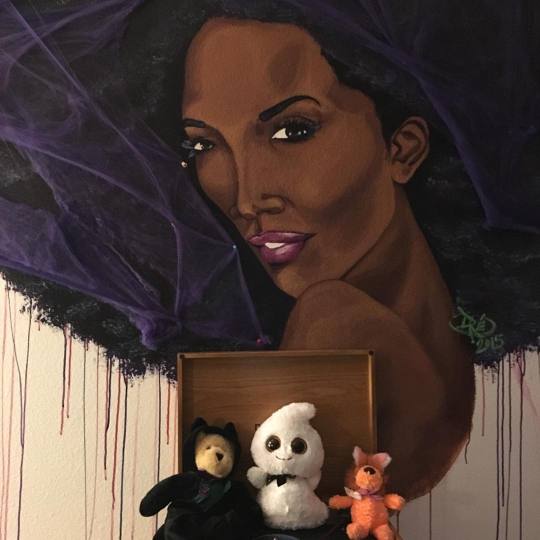
Happy #halloween2015 from #empiricamagazine and #ebonykeishabrown
0 notes
Photo
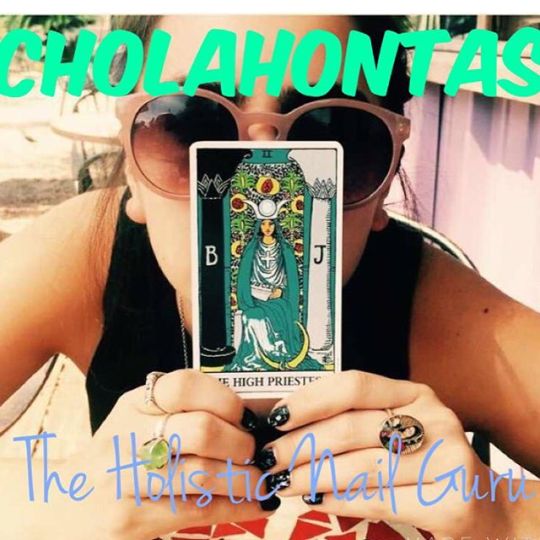
Check out our feature of the lovely @duhvette aka Cholahontas #nailart and #tarotcard extraordinaire at #empiricamagazine .com
0 notes

